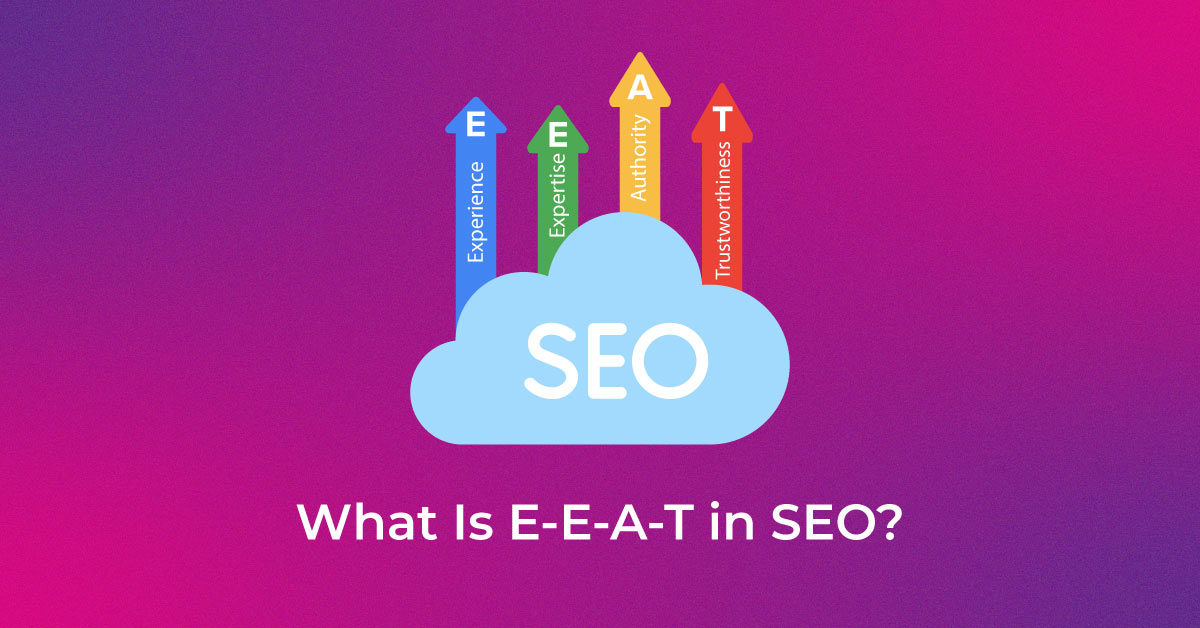|
Getting your Trinity Audio player ready...
|
Most retail businesses have now moved to online spaces. They are either launching their websites or transferring their businesses to larger e-commerce sites. However, one thing that most e-commerce companies look for is a Magento website.
A Magento website’s usability, as well as flexibility, helps businesses reduce costs and accelerate growth. Moreover, Magento also does many out-of-the-box things from a search engine optimization (SEO) perspective to improve your business’ online visibility to search engines and consumers.
What is Magento?
Before you learn how to optimize your website for Magento SEO, you must know what Magento is. Magento is an Adobe product. Unlike other content management systems (CMSs), it is an open-source technology. The powerful e-commerce software can grow with the company. Thus, most developers are actively creating add-ons to enhance the already enormous list of features the software has.
The platform has built-in PHP, which assists in the development of eCommerce websites. Hundreds of thousands of businesses are using the open-source technology to run their online store, including big names like Samsung, Nike, Ford, American Express, Xerox, and so on. A Magento website can cater to a business / store of any size.
What is Magento SEO?
You might understand Magento. But when it comes to SEO for Magento, things appear hazy. SEO aims at improving the ranking of a business on search engines. Its objective is to increase the online visibility of the business and drive more traffic to your website, resulting in increased revenue and business growth.
Magento SEO involves a range of adjustments unique to the Magento platform. The software provides many useful features for SEO, such as sitemap.xml and a robots.txt file, along with several ways to redirect pages. The issues website owners encounter with Magento SEO are improper canonical tags, lack of blogging functionality, and duplicate content from the faceted navigation.
Steps to Optimize Magento SEO to Improve Search Engine Rankings
1. Crawling and indexing
-
Faceted navigation and duplicate content
Many Magento websites struggle with faceted navigation. It causes significant crawling and indexing issues since it increases the number of pages available for crawling. These additional pages create duplicate and similar content.
Now, to resolve the issue, you need to work on controlling the crawl. The procedure to do this varies from site to site. You need to start by evaluating how Google is crawling and indexing the pages in your website. Once you have identified the low-quality, indexed pages, you need to remove the indexation and block the crawling of duplicate or low-quality pages through robots.txt.
-
Canonical tags for product and category pages
A Magento website does not set canonical tags for product and category pages. However, as best practice for SEO, these pages must have self-referential canonical tags. The tags inform search engines that the ranking of these pages should be high. So, what do you do to set canonical tags?
In vanilla Magento, visit the “Configuration” section under “Stores”. Select “Catalog” in the “Catalog” dropdown. Choose the “Search Engine Optimization” option from the dropdown list. From the dropdown, select “Yes” to enable “Use Canonical Link Meta Tag For Products” and “Use Canonical Link Meta Tag For Categories.”
-
Pagination Canonicalization
As mentioned earlier, a Magento site does not, by default, set proper canonical tags. The canonical tag for all the paginated URLs in a given series routes to the root category page. This is not an ideal practice from an SEO perspective.
The purpose of canonical tags is to consolidate duplicate content. However, paginated URLs are not duplicates of the root category page. Therefore, their canonical tag should not point back to its root. In the absence of a self-referential canonical tag, Google does not crawl the page. With the help of a developer, you can customize a solution that makes the site’s pagination use self-referential canonical tags.
-
Indexation of Internal Search Pages
Many website owners face the common Magento SEO issue of indexation of internal search pages. Google can crawl and index these low-quality pages, generally located in the /categorysearch/URLpath. You must apply a “noindex” tag to them to ensure that Google does not crawl and index them. A professional developer can help implement the tag on the required pages of your website.
Once you have applied the “noindex” tag, you need to check that there is no indexing of the internal search URLs. Use “site:example.com inurl:/catalogsearch/” to perform a search and take the necessary steps for URLs that still appear in the index and those that do not.
-
Sitemap.xml
With an XML sitemap, you can enhance the technical aspect of your SEO strategy. Crawlers use this sitemap when they explore your website. It gives them all the information they need about the pages on your website and ensures that none are missed. If you control the crawlers’ path, they see only the pages you want them to see.
Creating and optimizing an XML sitemap to resolve this SEO issue is easy. Magento provides a built-in feature for generating and configuring a sitemap in the backend. After you are done, you can see the list of sitemaps in the grid. You can also submit them to Google.
-
Robots.txt
After your sitemap is generated, it is placed on robot.txt files. This file enables you to restrict the number of pages Google can crawl from your Magento website. The SEO adjustment is extremely vital if your site uses faceted navigation that lets visitors choose from a variety of attributes.
Moreover, if your eCommerce store has any low-performing products, using the Magento 2 settings, you can place the noindex, nofollow tag on those product pages. They inform the search engine that you don’t want those specific pages to rank. The adjustment of the robots.txt file will depend on your particular store. There is no standard process.
2. Competitors Analysis
To excel at Magento SEO, you need to closely watch and evaluate what your competitors are doing. Start by preparing a list of competitor websites and assessing their product pages. Identify the keywords they use on their website. Additionally, find out which websites are routing shoppers to the competitor’s eCommerce store.
Although you need to develop a unique SEO strategy for your website, it is a good idea to monitor competitor performance. You can learn from their decisions and make adjustments accordingly. For instance, you can learn of a new keyword they are targeting or watch out for their homepage layout.
3. Keyword Research
A Magento SEO campaign greatly depends on keyword research. Every aspect of SEO optimization, including content creation, content addition, title tag editing, and so on, focuses on ranking your website’s pages for a set of chosen keywords. If you choose keywords that cannot drive sales, it is unlikely that the campaign will generate the desired results.
During keyword research, a professional SEO company identifies keywords that are most valuable to target and have the potential to drive relevant traffic to your website. Experts suggest that every product or category page should focus on ranking three to five main keywords.
Online tools can help you gather information on a keyword’s competition, search volume, and cost-per-click. By focusing on keyword research, you can optimize the content on your product pages to grab the attention of shoppers searching for the products and services you offer, be it in healthcare, furniture, clothing, or data management.
4. JavaScript Rendering
On Magento sites, another aspect that you need to monitor is content that loads through JavaScript. From an SEO standpoint, it isn’t inherently negative to use JavaScript for loading content, but you must review the process.
When key content requires JavaScript for loading, it means that Google needs to perform a two-step indexing process. It starts with processing the initial HTML and then returning to the website to render content that uses JavaScript to load.
SEO professionals need to intervene in the second step of the indexing process to ensure that Google can see all the content on the page. If JavaScript is loading any content or elements on the page, always check whether they are indexed or not.
Many online tools help in determining the content Googlebot can render on a page. There is also a process to manually identify content that loads via JavaScript and check if it is indexed. Use a “site:” search operator to confirm that Google can read the elements existing on the page. While there are several other factors to learn about JavaScript SEO, the one thing that you need to know is that content on Magento is likely to load through JavaScript.
5. URL Optimization
Search engines prefer short, consistent, and readable URLs that help understand the page content better. However, by default, Magento adds the extension .HTML at the end of the URL of your product and category page. This extension results in lengthier URLs that users find difficult to read.
The URL structure of your product pages should consist of the product name, manufacturer, and model number. While this can sometimes make the URL longer, it is a good practice for Magento SEO. But before you proceed with URL editing, know that you require expert SEO guidance. If you do it incorrectly, it can result in major negative consequences.
With the Magento 2 SEO functionality, it is easy to make the URL crisp and concise. All you need to do is navigate to “Configuration” under “Stores”. Next, select “General – Web”, and in the URL Options, select “No” against “Add Store Code to URL.”
6. Redirection
When users visit a website, they don’t necessarily enter the exact destination URL with the “https” or “www” subdomain. Magento implements global redirects. As a result, the user is redirected to your website even if one does not enter subdomain attributes. But, Magento uses 302 redirects to do this. Some studies claim that 302 redirects dilute link equity significantly. Therefore, 302 redirects must not be utilized unless there is no other option.
Fortunately, the Magento platform allows you to fix this concern in a few simple steps. Visit Stores – Configuration. Select “Web” in the “General” dropdown. Click “URL Options” and select “Yes (301 Moved Permanently)”. Once this is done, your Magento website will use 301 redirect codes to bring users to your website. Apart from global redirects, you must also apply 1:1 redirects for individual pages. Magento has a built-in feature to implement redirects for old pages if need be.
7. On-page Optimization
-
Title Tag and Meta Description
Title tags and meta descriptions of Web pages play a crucial role. These appear in search results and grab the user’s attention prompting them to click the link to your website. Your title tags must be unique and concise. You must also review your meta descriptions and make them original and convincing.
-
Related Product
Magento also makes it easier for you to add “Related Products.” You can use the feature on all individual product pages as it helps enhance the various SEO elements on your website. It improves the overall user experience (UX) and user engagement. Moreover, it can help generate more revenue by increasing upselling opportunities.
8. Blog Features
A Magento website does not provide blogging functionality. From a Magento SEO perspective, this is a major drawback. Generally, store owners assume that the category and product pages of an eCommerce site are most vital for revenue generation. However, blogs also play a positive role.
Recently, the trend has shifted, with informational content marketing receiving more attention. The strategy relies on keywords that a category or product page can focus on for better ranking. You must have seen that Google often ranks affiliate sites, guides, and “how-to” content above shopping search results. Therefore, you must put effort into building a blog with informational content to boost the SEO for a Magento store.
In the absence of informational content, many Magento stores cannot rank for some of their targeted keywords. It is because product and category pages alone cannot do the job. You can either set up a blog using WordPress or Magento extensions like Magento 2 Blog Extension from Magefan.
9. Structured Data
How your website uses structured data is of crucial importance. This data can include product listings, product reviews and so on. In other words, structured data refers to the code you place on your website to inform Google what each page is about.
A Magento website can be quite large, with all the different product pages making up the online store. With the help of structured data, you can improve the search engine’s understanding of your website.
Schema.org manages the structured data on your website. You can use it to mark up products, events, menu items, and so on, allowing Google to retrieve the data and showcase it in the form of snippets. Moreover, structured data enhances the click through rate (CTR) since it provides users with the most relevant information. It also improves your brand’s findability in search.
You can use Google’s free testing tool to assess the status of your structured data.
10. Internal Linking
Search engines use internal links to understand your website better. Internal linking is another strategy for Magento SEO optimization. The use of optimized anchor text on internal links is vital. However, do ensure that it is not spammy. It must be natural and diverse.
Magento offers several features to optimize internal links, and you must use them to your advantage.
11. Page Speed Optimization
You must optimize your website for speed. If your website takes too long to load, users are likely to leave. A website that takes five seconds to load averages 70 percent longer user sessions. The bounce rate also decreases by 35 percent. But before you take steps to improve your website’s speed, remember to test its initial speed.
A simple technique to optimize your website for page speed includes using Magento Lazy Load. The extension delays the loading of images, resulting in the optimization of the user experience. The extension does not load all the images on your website in one go. It instead loads them as you scroll through the page.
Conclusion
SEO is a dynamic process. It needs you to make constant adjustments to drive more traffic to your website and generate sales. Magento is a well-designed platform for SEO. The benefits of Magento SEO optimization are vast. Therefore, the time and money you spend on implementing the strategies of SEO for Magento are definitely worthwhile.
Popular Searches
How useful was this post?
0 / 5. 0













